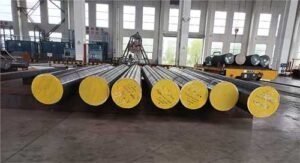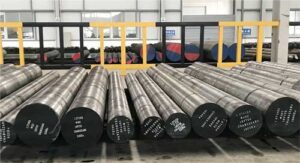When it comes to choosing the right steel for specific applications, the metallurgical world offers a diverse array of options. Two prominent categories are hot work tool steel and cold work steel, each designed for distinct purposes and environments. In this in-depth article, we’ll delve into the intricate details of hot work tool steel and cold work steel, comparing their properties, applications, and differences to help you make informed decisions in selecting the most suitable steel for your needs.
1. Introduction
Before we dive into the specifics, let’s establish a fundamental understanding of tool steels. These materials are renowned for their exceptional properties, making them indispensable in various industrial applications. Tool steels are divided into numerous categories, each tailored to meet the unique demands of specific working conditions.
2. Hot Work Tool Steel: An In-Depth Analysis
Composition and Alloying Elements
Hot work tool steel is engineered to withstand high-temperature environments. It typically contains alloying elements like chromium, tungsten, molybdenum, and vanadium. These elements impart crucial properties such as heat resistance and wear resistance.
Heat Resistance
Hot work tool steel shines in applications where extreme heat is a constant. It maintains its structural integrity even at temperatures exceeding 600°C (1112°F). This exceptional heat resistance makes it ideal for processes like die casting, forging, and extrusion.
Applications
Hot work tool steel finds its niche in industries requiring high-temperature stability. Its applications span from die casting molds to forging dies and extrusion tooling, where maintaining dimensional stability and wear resistance is paramount.
3. Cold Work Steel: A Comprehensive Overview
Composition and Alloying Elements
Cold work steel is engineered for applications that demand wear resistance in lower-temperature environments. It typically contains alloying elements like vanadium, molybdenum, and chromium, optimizing hardness and wear resistance.
Wear Resistance
Cold work steel excels in scenarios where wear resistance is crucial but extreme heat is not a factor. It’s ideal for cutting, shearing, and forming materials at room temperature or slightly below.
Applications
Cold work steel is extensively used in applications like blanking, shearing, and cold extrusion. It’s the go-to choice for tools that need to maintain their sharpness and durability during precision cutting and shaping.
4. Comparing Hot Work Tool Steel and Cold Work Steel
Temperature Range
The primary distinction between these steels lies in the temperature range of their applications. Hot work tool steel thrives in high-temperature environments, while cold work steel is optimized for lower-temperature operations.
Tooling Applications
Hot work tool steel is favored in industries like die casting and forging, where extreme heat and wear resistance are prerequisites. Cold work steel, on the other hand, excels in precision cutting and shaping tools for materials at or below room temperature.
Strength and Toughness
While both types of steel offer excellent strength and toughness, hot work tool steel is better equipped to handle high-temperature shock and thermal cycling. Cold work steel is renowned for its hardness and wear resistance at lower temperatures.
Heat Treatment
The heat treatment processes for these steels differ due to their distinct compositions and intended applications. Hot work tool steel is often subjected to processes like annealing and tempering, while cold work steel may undergo quenching and tempering for optimal results.
5. FAQs
Frequently Asked Questions About Hot Work Tool Steel and Cold Work Steel
Q1. Can hot work tool steel be used for cold work applications?
Hot work tool steel is not ideal for cold work applications due to its optimized heat resistance properties. Using it in cold work scenarios would be inefficient and costly.
Q2. Is cold work steel suitable for high-temperature applications?
No, cold work steel is not designed for high-temperature environments. It lacks the heat resistance needed for such conditions and may degrade under extreme heat.
Q3. What are the common industries that rely on hot work tool steel?
Hot work tool steel is extensively used in industries like die casting, forging, and extrusion, where high-temperature stability and wear resistance are critical.
Q4. Can cold work steel be heat-treated for specific properties?
Yes, cold work steel can undergo heat treatment processes like quenching and tempering to enhance its hardness and toughness, depending on the desired application.
Q5. Are there hybrid steels that combine properties of both hot work and cold work steels?
Yes, some steel alloys attempt to combine the best attributes of both hot work and cold work steels, offering a balance between heat resistance and wear resistance for specialized applications.
In conclusion, the choice between hot work tool steel and cold work steel hinges on the specific requirements of your application. Understanding their properties, temperature ranges, and intended applications is crucial for selecting the most suitable steel for your needs. Both types of steel have their unique strengths and are indispensable in their respective domains, contributing to the advancement of numerous industries.

